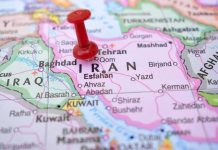
As the prospect of mass deportations looms, Mexico and Central American countries face the intricate challenges of balancing migrant policies with humanitarian concerns.
At a Glance
- Central America prepares for mass deportations as U.S. policies tighten.
- Mexico collaborates on deportation logistics despite initial resistance.
- Resource shortages and crime pose significant threats to migrants.
- Economic and social repercussions inevitable in Honduras and beyond.
The Human Cost of Deportation Policies
Norma, a 69-year-old Honduran, experienced firsthand the harsh reality of U.S. deportation policies when her asylum petition was rejected, sending her back to Honduras. The country’s limited resources pose serious challenges for deportees like her. Honduras has absorbed around half a million deportees since 2015, straining its capacity to reintegrate them with inadequate support systems.
Despite restrictive measures reducing unlawful border crossings, approximately 560,000 Hondurans remain in the U.S. without legal status, with 150,000 at risk of imminent deportation. Mass deportations threaten to exacerbate issues, leaving aid networks in Honduras overstretched. “They can find us in every corner of Honduras. We’re praying for God’s protection, because we don’t expect anything from the government,” Norma shares.
The Role of Mexico in U.S. Deportation Plans
The success of the planned mass deportation largely depends on the cooperation of Mexico. Despite initial resistance, Mexico is prepared to receive non-Mexican deportees from the U.S. National Guard troops have been stationed, and humanitarian immigration applications were paused to manage possible influx. President Claudia Sheinbaum stated, “There will be time to speak with the United States government if these deportations really happen, but we will receive them here, we are going to receive them properly and we have a plan.”
Northern Mexico’s border cities brace for potential risks with added crime challenges due to the influx. Mexican authorities have detained over 475,000 migrants between October 2023 and December 2024, but the socio-economic repercussions persist. As Sheinbaum acknowledged, “We can collaborate through different mechanisms.”
Economic and Humanitarian Impacts on Central America
Remittances from the U.S. play a crucial role in Honduras’ economy, and the prospect of mass deportations threatens to disrupt this lifeline. Many migrants face extreme poverty and violence in their home countries, the driving forces behind their migration journeys. The Trump administration’s policies could worsen economic and humanitarian crises in Honduras, Guatemala, and El Salvador. “Hondurans, Guatemalans, Salvadorans need to be very, very nervous because [Trump officials] are going to press the bounds of the law,” warns Jason Houser, former ICE chief of staff.
Amid the looming deportations, underlying issues like crime and economic disparity continue to plague Central America. Regardless of policy shifts, migration driven by these challenges is likely to persist, raising urgent questions about sustainable solutions for both socio-economic stability and human safety.
Sources:
- https://apnews.com/article/honduras-trump-mass-deportations-central-america-immigration-c28e71c590a9f3df2d607df13b956656
- https://nymag.com/intelligencer/article/trump-mass-deportation-immigration-mexico.html
- https://apnews.com/article/mexico-us-migrants-trump-deportations-c18d850aa67e39e826a2050eaf7c440a
- https://dnyuz.com/2025/01/07/trump-vowed-mass-deportations-mexico-and-central-america-brace-for-impact/




















